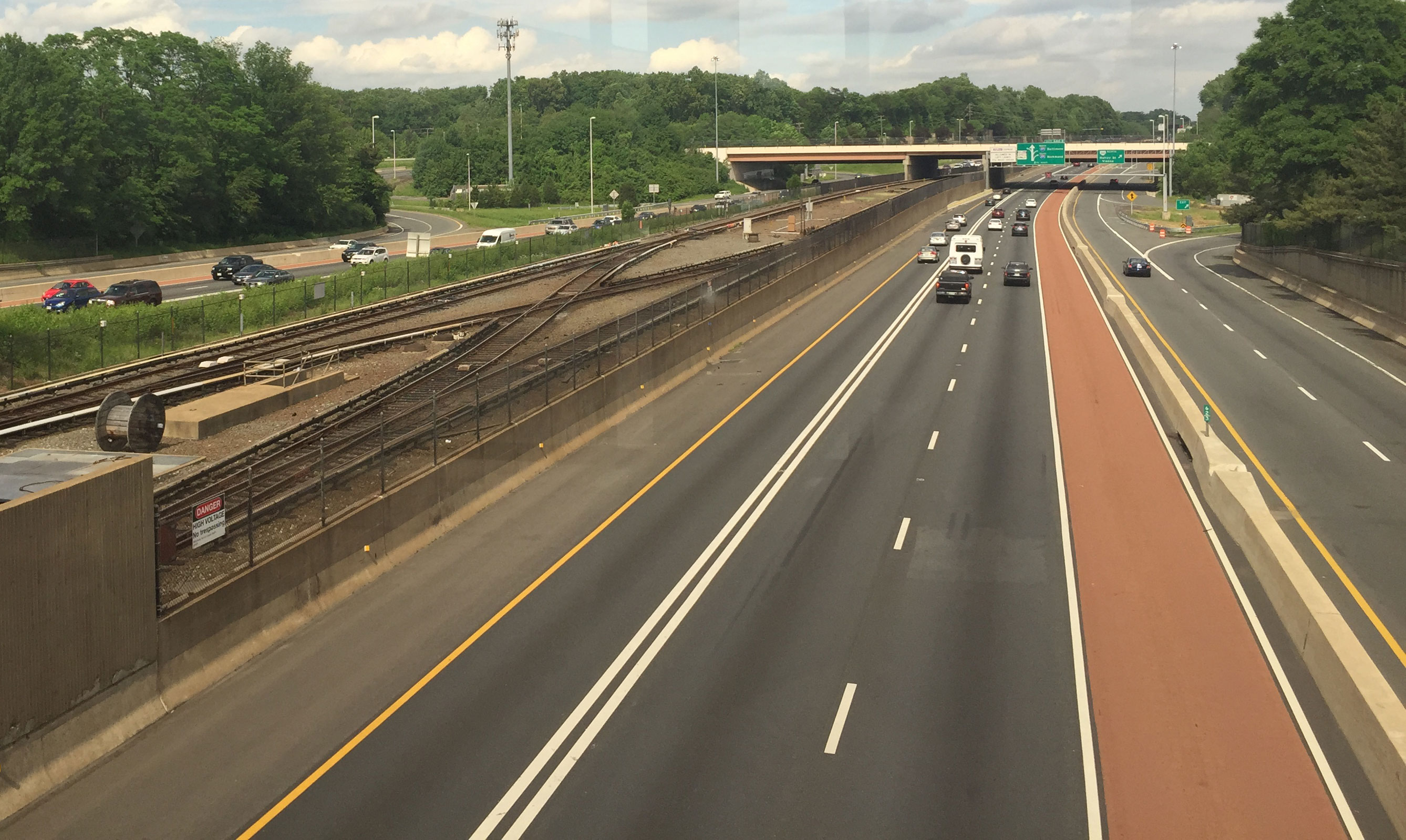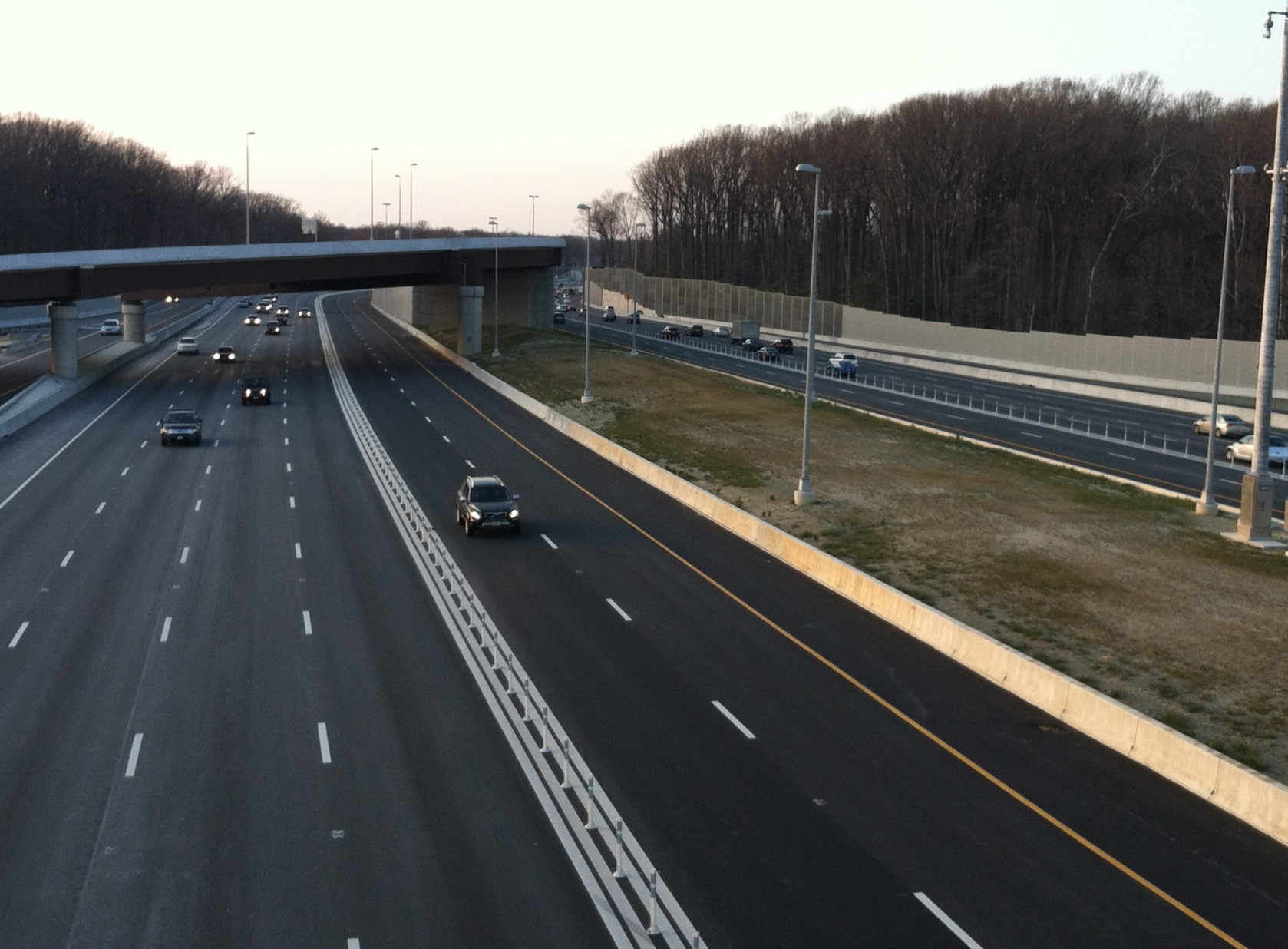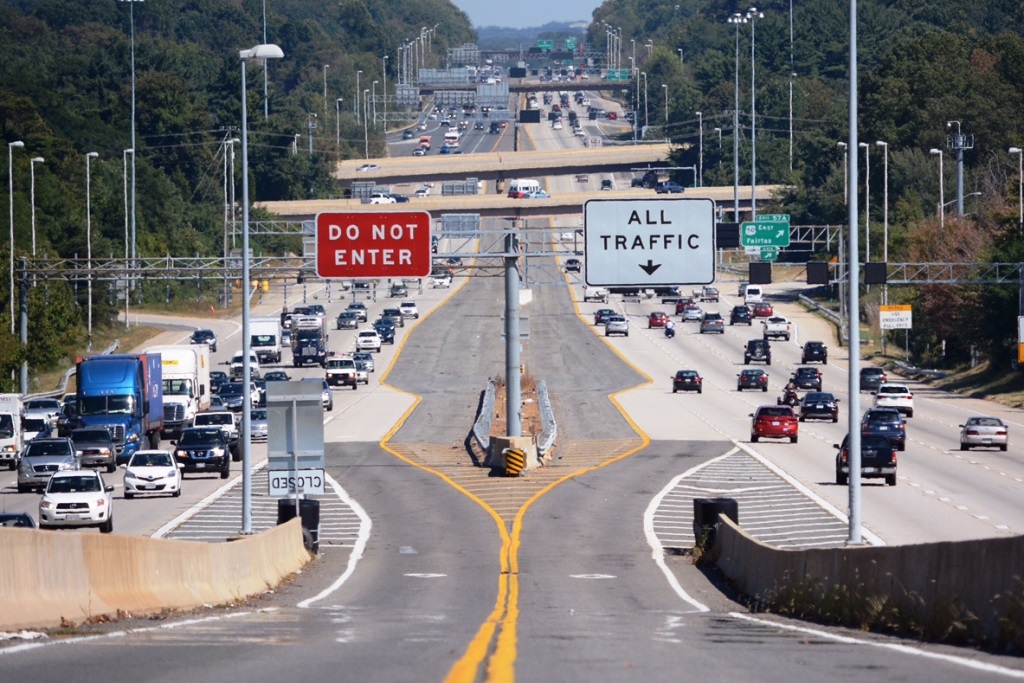WASHINGTON — The plan to add tolls for solo drivers in the rush-hour direction on Interstate 66 inside the Beltway could take a key step forward Thursday night.
The Northern Virginia Transportation Commission is set to vote on the framework for how the money expected to be generated will be distributed, including for the eventual addition of a third eastbound through lane between the Dulles Connector Road and Ballston. But opponents of the plan are expected to take a vocal stance.
The 20 commissioners will vote on a 40-year agreement that would give NVTC the right to decide which projects are funded by inside-the-Beltway toll revenue beyond costs. Under the agreement, toll revenues beyond costs and operation would first go to repay any advances from the toll fund, then go to projects approved for financing or selected by the NVTC. Finally, remaining money would go toward financing expansion of I-66 eastbound between exits 67 and 71.
The agreement specifies that any financing for that construction project from the toll revenues cannot take more than 40 percent of toll revenues after operating costs are accounted for.
The analysis of the widening project would begin no sooner than 2022.
If that analysis finds the average eastbound speed goes below 50 mph between the Connector Road and Exit 71 for more than 10 percent of the morning peak period over the course of 180 days, the widening process would automatically be triggered.
The widening would also be triggered by increased traffic on Route 50, Route 29, Washington Boulevard and Route 7.
In a concession to Arlington leaders, the project would be specifically limited to widening the road from two lanes to three, and would be required to minimize impacts on parks, streams, the W&OD and Custis trails, and any property not already controlled by the state. If the initial review does not find the widening is needed, it would still be triggered later if the conditions are met.
Fairfax County Supervisor Jeff McKay, a member of the commission, plans to vote for the agreement.
“What NVTC is voting on fundamentally is the criteria for deciding how the toll revenue would be used for projects, and so I’m looking at it less — and I may be different than other NVTC commissioners — but this is not so much a vote on whether or not we like the project or tolling insomuch as it is an agreement to the framework and how NVTC would be in a position to help allocate the toll revenue to transit improvements in the corridor,” he says.
“But I also know that not everyone is going to come to the meeting thinking they’re voting on the same concept,” McKay adds. “I know others who may not have an opportunity to physically vote on whether they like the project or not may believe this is an opportunity to make that known, and so that remains to be seen.”
The agreement includes provisions to allow vehicles with two people inside to continue to travel free during peak periods until 2020, or until the HOV-3 requirements are implemented with the new Express Lanes outside the Beltway, whichever is later. It also gives VDOT the right to change tolling hours, or add tolls on reverse commuters later. VDOT also gets the power to suspend tolls in the event of an emergency that requires a mass evacuation or in the event that I-66 is shut down by a crash or is being used as a detour from another highway.
It also clearly states that VDOT will continue to fund highway maintenance and general road operations as it always has — through the general highway maintenance and operating fund.
From the region’s end, the NVTC would be responsible for selecting projects each spring to be added to the Commonwealth’s statewide six-year plan. Each project would have to benefit the toll-paying users of Interstate 66 inside the Beltway, help achieve improvement goals and be one of a list of multimodal improvements for the corridor.
Those improvements can include funding for Metro; new or enhanced local and commuter bus service; assistance with carpooling, vanpooling or slugging; new park-and-ride lots; roadway improvements for roads impacted by the addition of tolling, and projects in long-range regional plans.
Any projects selected for funding would be required to show that they could spend the money allocated within five years.
“From my standpoint, what I’m voting on is whether or not NVTC is the proper agent to be able to allocate that, whether the criteria that’s been outlined by the state is the right criteria for how the money gets allocated, in which case I am entirely comfortable with NVTC being the agent to do that. I mean, it’s a body of elected officials that represent people in that corridor, NVTC very successfully manages a lot of revenue already for the state and for the jurisdictions and so they’re absolutely the proper agent to be doing that,” McKay says.
The commission is made up of elected leaders from Fairfax, Arlington and Loudoun counties; the cities of Alexandria, Falls Church and Fairfax; members of the General Assembly, and appointees from the governor’s administration.
The NVTC would begin an initial round of improvements before the tolls are implemented to offer other options for commuters. That round will be funded through a $5 million advance at the beginning of construction of the tolling project.
After that, the project is projected to generate $5 million to $10 million each year.
“You can make some pretty significant transit enhancements with that money, I don’t think you’re talking about revenue streams sufficient enough to stand up entire new transit networks, or certainly not sufficient enough to make major roadway improvements, but for spot roadway improvements, connecting pedestrian facilities, enhancing existing bus routes with maybe more rapid service along the corridor, those things certainly you can do within that window,” McKay says.
“People have falsely believed that the toll revenue is going to be significant enough to build interchanges and solve Loudoun County’s transportation problems, it doesn’t even scratch the surface of the money that you would need to do those kinds of things and it was never intended to,” he adds.
Tolls would only be collected in the peak direction from drivers who do not meet HOV requirements. VDOT plans to extend the peak period, during which HOV rules apply, from 2 ½ hours in each direction today to four hours when tolls are implemented.
“They are paying to use the road because they’re not carpooling or using transit, and long-term that is a recipe for disaster in terms of roadway, and so what we’re saying is, the revenue that the people are paying to have that opportunity should be used to improve and enhance transit, so that over a longer period of time those folks might consider alternate ways to get up and down 66. Without alternate ways, 66 will continue to fail,” McKay says.
The agreement between the Commonwealth Transportation Board, VDOT and NVTC is separate from an expected public-private partnership that would add new Express Lanes in each direction between the Beltway and Gainesville. Those lanes are not expected to be completed until 2021.
The Commonwealth Transportation Board is scheduled to take up the inside the Beltway framework agreement next week, as long as the NVTC approves it.








